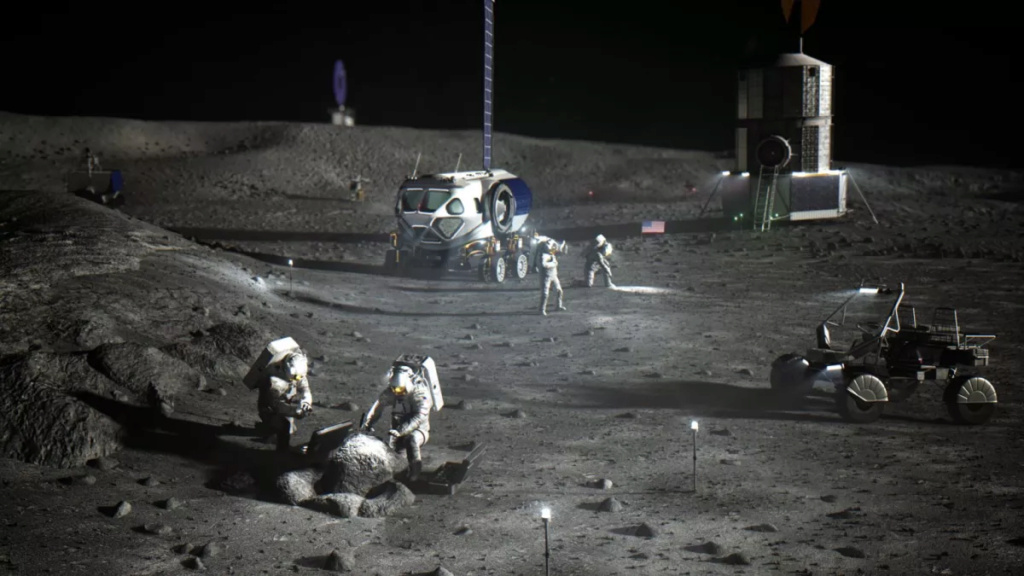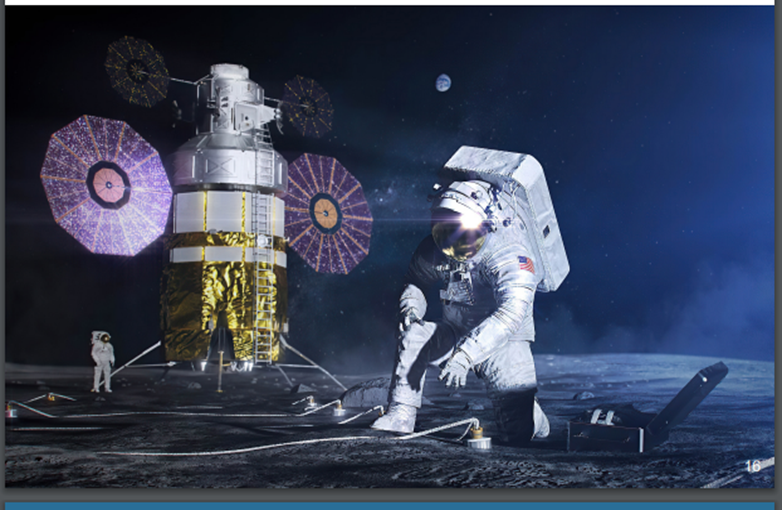Traces of life on the Moon: the next NASA mission could validate this hypothesis

Rather resistant microbes would be able to survive on the Moon and they would have traveled from Earth to its satellite in space shuttles.
The Artemis 3 mission should mark the return of the human being to the Moon in December 2025. This moon landing will be the first since Apollo 17 in December 1972. Artemis 3 should be the first lunar mission in the polar exploration zone of Artemis, the region located at the pole, at 84 degrees South latitude. During this future mission, there is no doubt that great discoveries await the astronauts and they could also discover life on the Moon.
?Organisms from Earth
New research suggests that evidence of life may be present in the region of the lunar south pole, in permanently very cold shaded craters. These living organisms could have made the trip from Earth.
"Microbial life could potentially survive the harsh conditions near the lunar South Pole," suggested Prabal Saxena, planetary scientist at NASA's Goddard Space Flight Center in Greenbelt, Maryland.

“One of the most striking things our team has found is that, given recent research into the ranges in which certain microbial life forms can survive, there may be potentially habitable niches for such life in areas relatively protected,” Prabal Saxena told Space.com.
Indeed, the lunar South Pole would possess the properties allowing for the survival and potentially "episodic growth of certain microbial life forms," Saxena said.
“We are currently working to understand which specific organisms may be best able to survive in such regions and which areas of the lunar polar regions, including locations of interest relevant to exploration, may be most likely to support life. ", did he declare.
From Earth's debris on the Moon to the microbes of astronauts
According to NASA research, small pieces of our planet could have been thrown onto the moon as "Earth meteorites". But that doesn't mean Earth's microbes survived that deep-space journey as well.

"While extraterrestrial transfer of organic molecules from meteoritic sources is very likely, and actually observed in our own terrestrial meteorite analysis, transfer of microbes from similar sources does not have the same probability," said Heather Graham, organic geochemist at NASA Goddard. “It may be an interesting idea, but without viable data, this pathway cannot be included in this study. »
Indeed, one of the most viable hypotheses would be that the various moon landings would have brought their share of microbes and other organisms. The NASA study team is keenly aware of the many ways in which humans are the greatest carrier of microbes on the moon.
“We consider humans to be the most likely vector given the extensive data we have on our exploration history and impact record as a second, albeit less influential, terrestrial source,” added Heather Graham. .
What impact will the Man on the Moon have with Artemis3?
Over time continued exploration of the moon may provide sources of water and carbon in places, such as the shadowed craters noted above, which may one day lead to growth.

“We will almost certainly deposit spores in protected micro-niches where the maximum temperature and radiation shielding characteristics at that site will allow them to persist,” Graham said.
Source : Space.com / NASA

